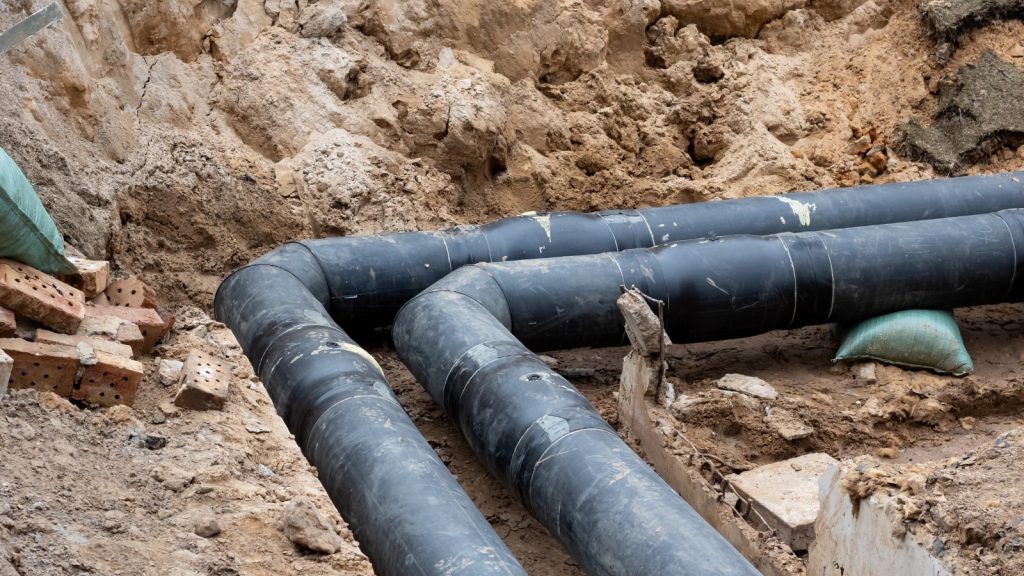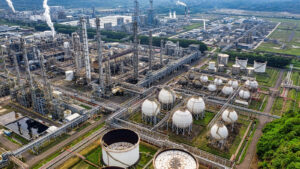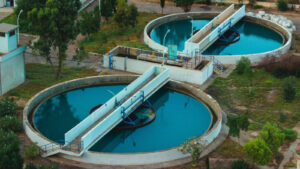Water treatment plants in Australia play a vital role in the country’s water supply as they are the mainstream ones that have to fulfil the water demand of the rising population. However, maintaining a water treatment plant is not a simple task. One plant or facility contains infrastructure and machinery that are highly heavy and tough to maintain. However, their upkeep is something the authorities cannot give a cold shoulder to, as it will end up interrupting the smooth supply of water. This is where the application of ‘Corrective Maintenance’ enters the spotlight as one of the key strategies that Australian water treatment authorities can conveniently implement within their operations.
What exactly is this corrective maintenance? Why is it so important for water treatment infrastructure operations? Let us explain everything in our blog article.
What exactly is this corrective maintenance? Why is it so important for water treatment infrastructure operations? Let us explain everything in our blog article.
What is ‘Corrective Maintenance’?

- Though this strategy has been in the limelight for a long time, most businesses still fail to take full advantage of it due to a lack of proper knowledge. Let us help you have a full-scale understanding of what it is.
- Corrective maintenance refers to the process of repairing or restoring a system or piece of equipment to its proper working condition after a malfunction or breakdown. It mainly focuses on addressing unexpected failures, faults, or defects that occur in machinery, software, or infrastructure.
- When you implement this type of maintenance within your business, it aims to rectify issues swiftly to minimise downtime and prevent further damage. The corrective maintenance process seems to range from troubleshooting, diagnostics, and part replacements to repairs in order to ensure the system functions at full scale.
- It is good that this corrective maintenance is responsive in nature, as it can enhance equipment lifetime and dependability by quickly fixing problems as they arise. This nature helps different industries and sectors run more smoothly and with fewer interruptions.
- However, if you are still doubtful about the difference between ‘Predictive Maintenance’ and ‘Corrective Maintenance’, let us explain this briefly. When it comes to ‘Predictive Maintenance’, it involves using data and analytics to predict when equipment might fail while allowing proactive repairs. On the other hand, ‘Corrective Maintenance’, addresses issues as they arise, focusing on fixing failures and restoring functionality after they have occurred rather than predicting and preventing them proactively.
Key Benefits of Corrective Maintenance for Water Treatment Infrastructure

Preventive Measures
This is one of the key benefits of implementing this strategy when it comes to the water treatment realm, as it is always good to have a protective shield in front of your operations. In this case, corrective maintenance plays a key role in identifying the preventive measures of water treatment infrastructure by intercepting potential issues before they arise. What does this mean? When you do regular assessments and swift rectifications of minor faults or deteriorations, it is similar to having a proactive shield against larger, more disruptive breakdowns, which is highly possible in the near future.
It is important to react quickly to minor leaks, equipment faults, or structural flaws to avoid them developing into significant problems that could potentially interrupt the water treatment process. This proactive strategy reduces downtime, guarantees a steady flow of water, and avoids any contamination or system failures.
It is evident that when you are empowered to swiftly resolve minor concerns through a corrective maintenance approach, water treatment infrastructure can effectively fortify its resilience, which is the best outcome. Plus, it clears the road for a consistent, reliable, and safe water supply to communities and industries.
It is important to react quickly to minor leaks, equipment faults, or structural flaws to avoid them developing into significant problems that could potentially interrupt the water treatment process. This proactive strategy reduces downtime, guarantees a steady flow of water, and avoids any contamination or system failures.
It is evident that when you are empowered to swiftly resolve minor concerns through a corrective maintenance approach, water treatment infrastructure can effectively fortify its resilience, which is the best outcome. Plus, it clears the road for a consistent, reliable, and safe water supply to communities and industries.
System Longevity
You invest in a system or infrastructure, expecting that it will last long enough to return your investment along with profits. However, what if they did not last that long? It is a total waste of your money, and you will have to face a loss of millions of dollars due to these sudden failures.
If you have implemented this strategy in your water treatment plant, its ability to quickly resolve problems helps to extend the life of water treatment infrastructure by reducing the slow deterioration that systems experience. In order to maintain the general quality of structures and equipment, these quick reactions are highly important, as they can prevent small issues from developing into serious problems.
The maintenance procedure keeps minor flaws or deteriorations, such as corrosion, leaks, or component wear, from risking the operation of the entire system by quickly fixing them. This type of maintenance reduces the need for significant repairs or replacements by increasing the operating lifespan of equipment, pipelines, and treatment units without making it a burden.
As you can see, corrective maintenance acts as a protective shield and ensures that the water treatment infrastructure remains robust, functional, and efficient over an extended period.
If you have implemented this strategy in your water treatment plant, its ability to quickly resolve problems helps to extend the life of water treatment infrastructure by reducing the slow deterioration that systems experience. In order to maintain the general quality of structures and equipment, these quick reactions are highly important, as they can prevent small issues from developing into serious problems.
The maintenance procedure keeps minor flaws or deteriorations, such as corrosion, leaks, or component wear, from risking the operation of the entire system by quickly fixing them. This type of maintenance reduces the need for significant repairs or replacements by increasing the operating lifespan of equipment, pipelines, and treatment units without making it a burden.
As you can see, corrective maintenance acts as a protective shield and ensures that the water treatment infrastructure remains robust, functional, and efficient over an extended period.
Energy Efficiency
The latter significantly contributes to the energy efficiency of water treatment infrastructure by optimising the performance of equipment and systems. Since it can swiftly address issues like pump inefficiencies, faulty valves, or worn-out components, this approach helps to reduce unnecessary energy consumption inside your water treatment facility.
You will notice that as soon as these problems are fixed, the infrastructure functions better and the amount of energy needed for the water treatment process is reduced. Proactive maintenance also avoids overstressing and pressure on the system, protects energy resources, and eventually lowers operating expenses.
The best thing about this approach is that it aligns with your sustainability goals by minimising the carbon footprint associated with water treatment operations. It is clearly seen that the corrective maintenance approach optimises the infrastructure with its ability to enhance energy efficiency while reducing operational expenses and environmental impact by more than 75%.
You will notice that as soon as these problems are fixed, the infrastructure functions better and the amount of energy needed for the water treatment process is reduced. Proactive maintenance also avoids overstressing and pressure on the system, protects energy resources, and eventually lowers operating expenses.
The best thing about this approach is that it aligns with your sustainability goals by minimising the carbon footprint associated with water treatment operations. It is clearly seen that the corrective maintenance approach optimises the infrastructure with its ability to enhance energy efficiency while reducing operational expenses and environmental impact by more than 75%.
Cost-Efficiency
When you have a corrective maintenance strategy implemented within the operational system, it will help you stay away from the potential expenses associated with major breakdowns or replacements. As we mentioned above, if you can address issues promptly, it will empower you to prevent small faults from evolving into larger, more costly problems, reducing the need for extensive repairs or complete system jams. When repairs and interventions are carried out on time, the total cost of maintenance goes down since resources can be focused on fixing individual problems before they get worse.
It can have financial implications for communities and businesses that depend on reliable water access because this proactive strategy also minimises downtime and guarantees uninterrupted water delivery.
This not only saves your head from immediate repair costs but also preserves resources and prevents the need for costly emergency measures, which contributes to long-term cost savings and efficient operations.
It can have financial implications for communities and businesses that depend on reliable water access because this proactive strategy also minimises downtime and guarantees uninterrupted water delivery.
This not only saves your head from immediate repair costs but also preserves resources and prevents the need for costly emergency measures, which contributes to long-term cost savings and efficient operations.
Enhanced Performance
This means taking care of fundamental problems as soon as possible to prevent the system from working at its best. The maintenance procedure ensures that the water treatment system runs at its optimal performance by immediately detecting and fixing small issues, such as clogged filters, equipment failures, or operational inefficiencies.
This proactive strategy surpasses strict quality standards and regulatory requirements while maintaining constant and high-quality water production. Timely management of such issues reduces interruptions and downtime, helping the infrastructure to be reliably supplied with clean, safe water.
This proactive strategy surpasses strict quality standards and regulatory requirements while maintaining constant and high-quality water production. Timely management of such issues reduces interruptions and downtime, helping the infrastructure to be reliably supplied with clean, safe water.
Embarking on an Error-Free Journey with Corrective Maintenance

Since the smooth operational background of your water treatment infrastructure cannot be compromised for any reason, you should be taking highly effective measures, such as corrective maintenance, to prevent potential losses. It would be really helpful if you had invested in a software solution that could be easily integrated with the corrective maintenance tools. You can expect an outstanding result if you purchase the system from an expert in the industry.







